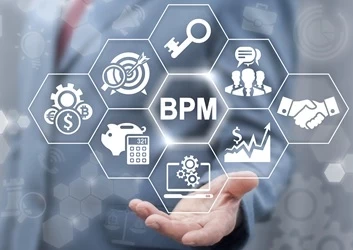How to Break the Traditional Business vs IT Barriers in BPM
Add bookmarkWhen it comes to implementing BPM, Business and IT often have a completely different understanding and expectations. There’s often a miscommunication and distrust between the two communities that impedes alignment of strategy and execution, which in turn undermines the true value of BPM.
Business stakeholders come with a lot of potentially conflicting requests from BPM. On one hand, they’re all about strictly enforcing procedures to increase productivity; quickly and flexibly adapting those procedures which don’t deliver; measuring and analysing the KPIs with all the data in the world – but all immediately, and on a single plate. A lot of "what-ifs", "maybes" and moving targets.
[EventPDF]
On the other hand, IT quite often sees BPM as yet another integration layer. And they typically want everything written in stone.
The business frequently underestimates the value of process and data modelling– they believe that modellingcreates unnecessary admin that the IT guys will hide away. They may prefer to create a lot of "manual strategic reports" because "I can do it faster than those slow IT projects".
On the other side of the chasm, the IT puts BPM into the old bag labelled "Integration" – all your middleware, enterprise buses and transmission protocols are already there – secure in the hands of the top technical talent. But this talent is so "techie" that it struggles to understand the "B" part of the "BPM".
Resolving this type of conflict requires a different way of thinking – blurring of the traditional role boundaries. Business process owners need to become more tech-savvy, while solution designers need to become business architects. Process and data modellingis where you bring together open minds – but even they often become stuck. Business wants to see processes simply, whereas IT are understandably concerned with the underlying details.
Take the Adidas Group – they kicked off its BPM initiative not as a top-down corporate program but through a series of bottom-up departmental projects, still tied to corporate-mandated improvements. The first projects were picked from the areas where the "blurred mind-set" was available – business owners were tech-savvy and willing to participate in the designs, while the IT leads were professionals with strong background in integration technologies but very business oriented way of thinking.
After gaining the initial agreement on what BPM is, it was still critical to keep both parties engaged. What kept them moving forward fasta good BPMS tool – one that allowed the business to actively participate in process discussions early on, and to recognize "their" data even when turned into a tech language – and one that turned all those models into running processes which were still fully understandable for the non-IT team members.This was facilitated by the layered architecture of the BPM software which put business people firmly in the driving seat for process design and management, while IT had full control over data, configuration and integration.By putting BUSINESS back into BPM, quantifiable results are delivered faster, projects can scale and deliver continuous improvement.
In short: in order to break the traditional BusinessvsIT barriers you need to bring together the people who are willing to learn the others’ language and arm them with tools to ensure nothing gets lost in translation.To learn how Bizagi’s software enables business and IT collaboration, take a look at Bizagi’s free Modeler platform: www.bpmn-process-modeling.com

























